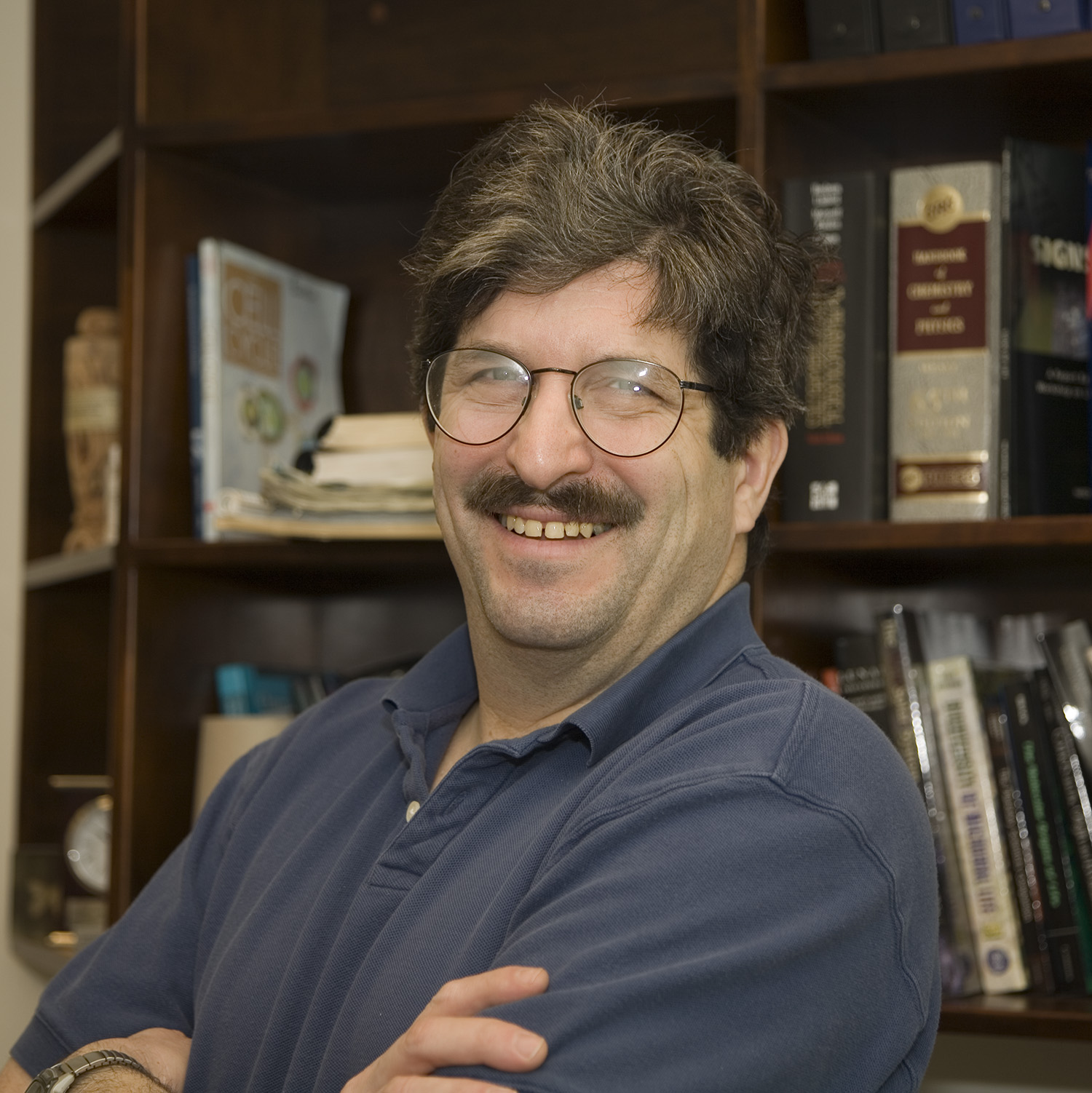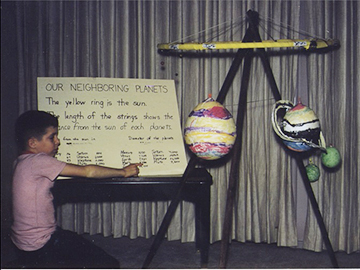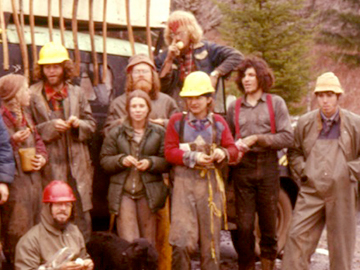
Gary Ruvkun nurtures a healthy skepticism about herd behavior in science.
“Part of the proof that microRNAs are a big field is you go to PubMed and see 25,000 references,” says the “sixty-ish” professor of genetics at Harvard Medical School and Massachusetts General Hospital. “What that really is, is proof that the herd discovered microRNA. It is not proof that it is actually important.”
This from the man who won a Lasker Award and is widely believed to be a Nobel contender for his 1993 co-discovery, with Victor Ambros, of those very microRNAs—snippets of genetic material that can turn genes on and off, a job scientists had thought only proteins could do.
These days, Ruvkun continues to make discoveries about microRNAs, RNA interference, insulin signaling, metabolism and longevity using the tiny worm C. elegans. He also develops genetic sequence detection instruments to sniff out previously unknown microbial life in extreme environments.
Ruvkun sat down to talk about his experience planting trees in an Oregon profit-sharing commune, how (not) to run a lab, the importance of recognizing one’s strengths and his circuitous career path from Berkeley to Mars.
HMS: How did you first get into science as a kid?
Ruvkun: A number of things conspired to make it easy for someone of my age, precisely, to be a scientist. One is the mania around the space program. It was a national obsession. There was the worry that the Soviets were going to overtake us. The U.S. had economic power unrivaled in the world after winning the war, so the amount of money that could be poured into science was humongous. Science was at its mythic height because the atomic bomb had won World War II. Scientists were like genies. And the Soviets were going to become the dominant genie.
Then there was early TV. At the moment the space program is launching, literally, television decides they need to fill their time with news. Good journalists are going into science reporting, too. And so little Gary, sitting in my parents’ house, watching on a black-and-white TV, gets science lessons.
These launches were absolutely riveting. The networks would fill four-hour segments with flat-top haircutted engineers blathering on about orbital dynamics with their thin little ties, and they got viewers. It was a perfect storm of wonderfulness.
It completely captured my mind. And I grew up in Oakland, California, so this was all on at four in the morning. I don’t know why my parents let me do it.

HMS: Were there scientists in your family?
Ruvkun: My dad was an engineer. In high school I thought I would be an engineer because I liked electronics. I became a ham operator and met all these other amateur radio people. Some were just wicked smart. People who really mastered the craft of designing electronic circuits and knew how they work and just everything about science and radio communication.
To see that kind of mastery when you are 13 or 14 years old compared to the mediocrity that is junior high and high school—I think that was important for me. When I got into science and started going to meetings, it was completely recognizable because it was the same nerdy types, passionate about their craft.
So I learned nerd pride early on, and I learned how to recognize people who are really good at what they do. It has helped me run a good lab, where I can figure out who’s got the kind of spark I’m looking for.
HMS: How do you run a lab?
Ruvkun: I think it is sort of who you select. Oh, the ways people mismanage their labs are manifold.
HMS: Like?
Ruvkun: Well, there is the Marine Corps mentality where you are going to break somebody down and build them back up. It doesn’t work. If you want to do something creative, it doesn’t help to destroy people and their confidence.
So I’m never, ever critical because I’ve never seen anybody change based on criticism. People change by example. I try to influence people by gathering a group that has a similar mindset so they imprint on each other.
You get a range of skills in the lab where some people are just clicking on all cylinders and doing magnificently. Those are the ones you hope everyone imprints on. The mistake most people who run labs make is they want everybody to be a superstar. They drive themselves crazy. That is just not how it works. It’s better to accept the range.
There is not a lot of top-down management in my lab. It’s more letting things bubble. My favorite thing is when the group of 15 people influence each other in interesting ways and I’m on the sidelines. That’s magnificent.
HMS: What led you to figure out whose labs you wanted to train in early in your career?
Ruvkun: Well, I think there I was led by fear more than anything. When I got to grad school I wasn’t as prepared as many people were. I hadn’t really majored in molecular biology. And partly there was the fear that Harvard might be at another level I wasn’t ready for.
There was a star system of luminary professors who people tried to work with. They had these reputations that they walked on water, and they were scary. I had great trepidation about having those types judge me as not quite up to speed. So I picked Fred Ausubel’s lab because he was less scary but still had that spark of brilliance and craft that I had learned to recognize first in my electronics friends in high school and then in my science friends in college. And actually, he’s still right next door to me and we still collaborate.
HMS: So you must not have been too disappointing.
Ruvkun: Yeah. No. No. It all worked out well.
HMS: How did your year planting trees in Oregon after college shape you as a scientist?
Ruvkun: The tree-planting cooperative exposed me to a work crew. I think that informed how I would work in a lab. I view it as a crew. It also exposed me to the range of commitment people will have; not everyone is completely invested in their work life.

When I got to Harvard, Fred was working on engineering nitrogen fixation into plants. That was an admixture of how my father had programmed me to think, to have a technical view of the world, and what going to Berkeley had told me, to try to do something that helps the world. I had also traveled to Latin America, and that told me to do something that is not just about the First World. So it added up to what I thought would be a nice mixture of science and practical impact.
I eventually gave up on practical impact with the view that if you do fundamental science you will probably have more impact in the end, and that I’m probably better at that. Engineering things is a level of care I’m not particularly good at. I’m sloppy and imprecise. Making something that works would not be playing to my strong suit.
HMS: How does being sloppy and imprecise work for basic science?
Ruvkun: I try and say to my lab members, “Look. If we’re going to do something biologically and try and look at a response, it’s got to be a dramatic response that you don’t need a lot of error bars or statistics to study.” We do a lot of GFP [green fluorescent protein] fusions where you either see it turn on or you don’t.
I’m constantly harping on people to drop the initial forays that give results that you barely believe. The experiments where you see a twofold change in what you are observing, don’t work on that. Because, yes, with good statistics you could figure it out. But life is short. So we do things that are dead easy.
And that means having the ability to switch fields. I would say that is one of my fortes, to move into new arenas because I’m looking for big biological effects.
HMS: Did your travels between college and graduate school influence your science career in any other ways?
Ruvkun: Going to Latin America removed me from the social constraints that Berkeley had. In Oregon, with my tree-planting collective, I saw, peripherally, serious revolutionaries. Berkeley had mostly armchair revolutionaries. I found that there is a herd mentality even to those anti-authoritarian streaks. I learned to recognize herd behavior on both sides of the political divide and try to resist it.
There is herd behavior in science like crazy. If I am generous, I would estimate that 50 percent of the science done in the world is trying to mimic other high-visibility work. It could be much higher than this. Terms like “promoter bashing,” “retard gels,” coined when I was a postdoc I think, reflect the dismissive attitude towards experiments that become so reflexive. I could probably rattle off 20 very common types of experiments that everybody was doing at certain points in my career where I tried to not do that, consciously, because it’s like, “Well, what am I going to add to this mix if everybody is doing it? Nothing.”
HMS: What is an example of a different approach that you took?
Ruvkun: One results-driven approach I’m really happy with occurred when we started doing RNAi to try to make worms live longer. You know, this life span stuff, I’ve always done it half with my fingers crossed partly because it can be so overblown. The press can pick it up and exaggerate it into people living longer.
Almost in a bookkeeping enterprise we did RNA screens of some genes we hadn’t been able to test. Sean Curran, who was a postdoc with me, got a bunch of hits on things that increased life span. There were lots of essential inactivations. It was hard to weave it into a story, like why would inactivating a ribosome make you live longer?
When Sean was doing the experiments, he had bacteria on a plate, put the worms down, they ate the bacteria and that caused the RNAi to start. They have to do this for two weeks, right? They have to stay on the bacteria. But the worms kept going off the plate. They were committing suicide. Sean was saying it’s a technical problem and trying to find a solution, and my response was, “Well, why are they doing that? Why are they repelled by the food?”
A light bulb went off as we started to talk about it: They feel sick and they know it. Because these are gene inactivations that cause developmental arrest. The worms have a calculus that says, “Oh, if I don’t feel well, it must be what I ate,” just like us. So I was anthropomorphizing and thinking, this is pretty interesting. This is the genetics of not feeling well. We can study what it means to not feel well and how you elaborate defense mechanisms.
Perhaps feeling unwell is an ancient animal response, and when a worm feels sick it’s exactly how humans feel when they have the flu. In the worm, then, we might be able to find gene inactivations or mutations that make it impossible to feel sick, if feeling sick is an active, regulated process of recognizing that you are under attack.
That completely changed what we were doing into, essentially, toxicology. But it started with aging. And it still is, but now it’s reinvented itself into innate immunity. How do you know when bacteria is a friend or a foe?
HMS: It gets back to what you were saying about jumping specialties.
Ruvkun: This is just me: looking at a problem from a completely new angle, driven by experimental observations.
There will be about a 20-year span over which toxicology will start to pay attention to what we’re finding with these worms that feel sick. And the pharmaceutical industry. And the innate immune field. To watch them fall into place is fun.
HMS: Waiting for the herd to follow you?
Ruvkun: We want to see the herd. While I disparage and tease about the group behaviors of scientists, it makes it easy to see when your work has been influential. The herd is an excellent biosensor for science.
We get the same critiques all the time, which is, “Okay. You’ve shown this is true in a worm. Why aren’t you doing it in a mouse or a human?” It is just so boring. It’s important to prove, and other people will do it. But if I do that I’m not using my skills properly. I’m wasting what I’m best at.
HMS: So it’s back to knowing what your strengths are.
Ruvkun: After we had our worm finding I went to see Anne Klibanski, who works at the anorexia clinic [at Mass General]. We discussed the idea that these girls who won’t eat might have goosed-up surveillance systems and might be hallucinating poisons that don’t exist. And she was willing to listen. Some worm guy is coming in and saying, “Let’s look at your anorectics and see if they have a gene expression profile that says ‘poison.’”
It didn’t work. We didn’t see it in the blood samples we took. But that’s my best-case scenario of showing something is true, to go 20 steps ahead and see if we can get something out of it. Now we need to go back and do the project step by step. Real science, testing hypotheses. But the dream scenario is to take a 20-pace step instead of 20 steps one by one.
HMS: And sometimes it works, and sometimes it doesn’t?
Ruvkun: The normal way I try to operate is to have a portfolio of have-to-work experiments and crazy Hail Mary experiments. I tell people it’s like an investment portfolio. You can’t put 100 percent of your assets into some high flier but you’ve got to put five percent in.
Some percentage of my postdocs won’t do anything risky. And I don’t try to slap them into that. People have different aversiveness to risk.
HMS: What do you think are some of the important unanswered questions in biology right now?
Ruvkun: To me it’s about answerable unanswered questions. There are a lot of people who go into studying consciousness who never come out. I’ve always been very practical. I like things that are going to break down.
In my own past trajectory, it was pretty clear molecular genetics was going to be king for a while. I think studying things genetically is still the way to go. And RNAi. The RNAi revolution has just started.
There is too much histone modification work, I think. That’s a herd mentality. People should be aware of what is a herd behavior and what isn’t.
HMS: And whether the herd is right or not?
Ruvkun: The herd can be wrong. The herd is often wrong. But it never starves. Well, rarely starves.
HMS: You’ve strayed from the herd again recently with your work on SETG (the Search for Extra-Terrestrial Genomes), seeking DNA or RNA on other worlds. Is that a remnant in your head of the space program?
Ruvkun: Yes, it very much comes out of that. But the reason it works—I should say, barely works—as a project is that there are a whole lot of people in science who love astronomy.
HMS: How did you first get the idea?
Ruvkun: Most people looking for life on other planets think about it as independently evolved there. To my mind it’s much more fun to think about panspermia and life moving between planets. I think you should look for life that looks exactly like what life looks like on Earth, because it’s so much easier to do.
When I heard 16S PCR [a test that detects certain ancient gene sequences that are present in all known living organisms] was starting to be done to discover life on Earth in extreme places, on mud flats and things, my instantaneous thought was, “You’ve got to do that on Mars.” You can take the incredible infrastructure from genomics and send it to Mars, right? You can do DNA sequencing there.
Maria Zuber, who is a big-shot planetary scientist over at MIT, and I have been configuring this at a low burn. We have a superb project scientist, Chris Carr, who designed spacesuits as a graduate student and is now designing ways to sequence DNA on Mars. It’s not at the point where we are actually building an instrument, but we put in a proposal for a lander in the third decade of this millennium. Whether we will get it or not is a long shot.
HMS: Are people receptive to the project or do they think you’re nuts?
Ruvkun: I like it because the reception was initially, “You guys are so stupid. Why would you think life on Mars would look like life on Earth?” And these are planetary scientists. But they are slowly coming around.
It’s been a 15- or 20-year process for us. The first presentation we gave to space scientists was in 2000. Gerald Soffen was there. This was the guy who ran the Viking Life Detection Instrument development during the early 70s, right? He was from the generation of engineers and scientists I watched on TV when I was 10. He came up to me and said, “That’s a great idea. You’ve got to fly the mission.” It was like I had died and gone to heaven.
So I’m now on the committee on planetary science. I get to be on the inside and hear people present what the next mission is going to be. It’s a dream come true.
This article was edited for length and clarity.


